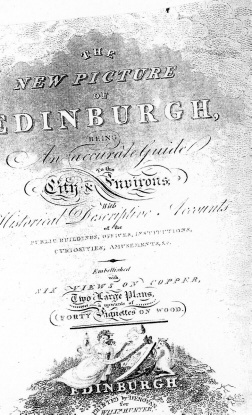|
History of Golf in Scotland
�My oldest book mentioning golf.
�The New Picture of Edinburgh�, pages 153-154, �Company of Golfers�, dated 1798

Company of Golfers.
It is almost certain that this healthy exercise is peculiar to Scotland, and of very long standing, since we find it prohibited as early as the year 1457, least the exercise might become instrumental in setting aside the practice of archery. The ground considered as most proper for this manly amusement, is that which is rather rugged and uneven, as it requires the greater dexterity and skill to come off victorious. Such ground the people of Scotland call links. The balls made use of in this game are made of leather, and stuffed with feathers, to a consistency almost as hard as a stone, which are struct with clubs of three or four feet in length, slender and elastic, with lead run into their heads to render them sufficiently ponderous. The person who strikes the longest ball does not necessarily bid fairest to come off victor, the shortest strokes often requiring the greatest knowledge, and the directing it in such a manner as to lay it on smooth ground, from where the next stroke may remove it with the greatest facility.
THE Magistrates of Edinburgh did not consider this amusement as requiring to be discouraged, since in 1744 they presented the company with a silver club, to he played for annually, and to which a gold or silver medal was to be appended by the conqueror. With the exception of the years 1746, and 1747, this annual amusement has been constantly observed, till the club is now ornamented with about 48 medals or balls, with names of the victors inscribed upon them. In the year 1768, twenty-two of the members subscribed the sum of £.660 for the purpose of building a house for their occasional meetings, which was erected on the Links of Leith, at the south-west corner. The ground was feued from the Magistrates of Edinburgh, for the annual payment of 20s. which was to be augmented to the sum of £. 5, whenever the house is appropriated to any other purpose. The area contains a commodious tavern, and has a bowling green behind it.
|






